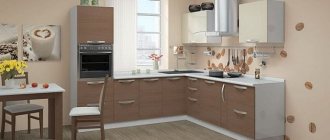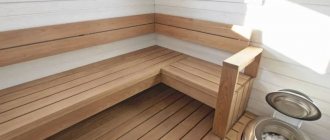Prepare a blender for grinding coffee
To grind coffee in a blender, the equipment must be properly prepared. This will prevent possible damage:
| Step 1: Put on the lid Be sure to put the lid on the blender while grinding coffee beans. Otherwise, all the walls, ceiling, and floor will be strewn with pieces of coffee. | |
| Step 2. Prepare a dry cloth After grinding the coffee beans, you need to thoroughly wipe all parts with a dry cloth |
When grinding coffee beans, it is better to set the blender power to low so that the equipment does not overload
Comparison of blender and coffee grinder
A coffee grinder is a specialized device used to grind coffee beans to a fine state. There are two types of coffee grinders - manual (work with mechanical scrolling) and electric (work from the mains).
There are also burr and knife grinders. Burr coffee grinders are based on grinding coffee between two metal plates, similar to the principle of a millstone. With this grinding method, you can achieve the desired degree of grinding. Therefore, this coffee is suitable for making cappuccino, espresso or latte in coffee machines and coffee makers. A blade coffee grinder allows you to obtain ground coffee beans using sharp, powerful, fast-rotating knives. They are located at the bottom of the bowl, which allows you to capture all the grains. The degree of grinding can be adjusted using the duration of operation of the coffee grinder - the longer it works, the finer the result. This method of grinding coffee beans is perfect for brewing an exquisite aromatic drink in a Turk.
Avoid grinding hard foods in a blender
A blender is used to grind, cut, and mix products until they have a homogeneous consistency. It is mainly used for preparing children's soups, purees, as well as minced meat, sauces, and various drinks. The properties of this device also include slicing vegetables and fruits. Many blenders have the function of grinding solid products (ice, cereals, nuts). That is why, using a blender as a coffee grinder, you can achieve the desired result.
The peculiarity of using a blender as a coffee grinder is that its structure is in many ways similar to a device specially designed for this (same bowl, knives, motor). Unlike a blade coffee grinder, the blades of a blender are placed higher and have a shorter length. This does not allow the product to be crushed evenly and in order to obtain a homogeneous mass, the device must be shaken from time to time during operation.
Not all blenders have the function of grinding solid products. Therefore, when choosing such equipment, those who want to combine two devices into one should pay attention to this.
Important! Frequently using the blender to grind hard foods can negatively affect its performance and shorten its service life.
Grind coffee in a hand blender: 3 tips
To grind coffee without unnecessary problems, it is better to use a hand blender. I will give three tips for using this technique:
| Tip 1. Prepare all parts of the blender Before you start using it, you need to prepare and assemble all the parts of the blender. To grind coffee beans, it is better to use an attachment with the largest number of blades | |
| Tip 2. Pour the grains into a cup After assembling the blender, you need to pour a small amount of coffee beans into it. Then start grinding the product | |
| Tip 3: Grind on low power Grind grains only at low power. If you notice that the equipment is very hot, turn it off for 20 minutes, then start again. When finished, pour the coffee into a separate container. Clean and put away the blender |
Useful tips
The mandatory presence of a lid has already been mentioned.
It is also important to choose the right knives. The nozzle must have at least 4 blades and double knives. The grinding result depends on this. Even a powerful unit will not cope with the task if the knives are unsuitable. It is also important that the blades are sharp. Before use, the equipment is thoroughly washed. There should be no foreign products or odors inside the bowl. In addition to a blender, a mechanical mill or a regular rolling pin is suitable for grinding grains.
A blender can handle grinding coffee beans quite well. But you cannot always use it for such purposes. It can help out in an emergency, but cannot be a regular replacement for a standard coffee grinder. If used frequently for other purposes, the device will simply stop working. Therefore, grinding must be done extremely carefully.
Conclusion
Now you and I know for sure whether it is possible to grind coffee beans with a blender. Finally, a small conclusion:
- Use a hand blender . To grind coffee beans, it is better to use a simple hand blender to control the heating of the equipment. If the blender gets very hot, stop working for 15 minutes, then resume again.
- Maintain consistency . To avoid damage to the blender, operate it correctly - turn it on and off according to the instructions.
- Grind coffee beans on low power . Otherwise, the equipment will quickly wear out and fail.
Coffee grinding methods
A coffee grinder is often used to grind coffee.
Hard coffee beans are used to crush them into a homogeneous mass using durable devices with sharp knives. When electrical household appliances were not well known and available, mechanical ones came in the form of a coffee grinder. But not specially created for grinding, but ordinary kitchen utensils for every average family. For example, a meat hammer. Before grinding the grains, they are placed in a bag so that they are not scattered around the kitchen. Easily accessible devices that replace a coffee grinder include a meat grinder. An indisputable advantage over a hammer is the uniformity of grinding. But still, this method is quite complicated and takes a lot of time. A manual coffee grinder is the best option among mechanical devices for grinding coffee.
Modern technology makes life much easier, just like a coffee grinder uses an electric mixer and blender. Everyone has these devices in their kitchen; they can grind beans, and many people don’t bother buying a coffee grinder. And it’s not surprising, because a good specialized device for grinding grains costs a lot of money. It is worth noting that a blender as a coffee grinder is the best option to get a high-quality base for preparing your favorite aromatic drink.
How much to grind coffee for one cup
The volume of ground coffee per cup depends on the method of preparing the drink. So, if you are going to brew espresso using a coffee machine, then for this you need to take 7 grams of ground beans. This will make 30 ml of coffee. If you are preparing coffee in a Turk, then take about 6 grams per 60 ml. water. If we give average figures, then to prepare two servings of coffee you can take 12–15 grams of ground beans.
To dose grains, it is best to use a measuring spoon for bulk products. But if you don’t have it, then you can get by with a simple teaspoon or tablespoon. Their volumes are approximately as follows:
- Level teaspoon 3–4 g.
- Top teaspoon 6 g.
- Level tablespoon 11–12 g.
- Top tablespoon 17–18 g.
Meat grinder
If you don't have a blender at hand, an electric or manual meat grinder can serve as an alternative. In this case, it is difficult to obtain a fine grind, but this type of coffee is suitable for brewing.
The inside and knives of the meat grinder must first be washed to eliminate the smell of onions. The first time you grind, the particles may be too large. Pass the coffee through the grinder several times to achieve a finer structure.
Attention! Raw meat and fish may contain pathogenic microorganisms. Before starting work, the internal surface and parts of the device should be disinfected and do not brew ground coffee in a French press or drip coffee maker.
How to properly wash a blender after use
Any technical device requires cleaning, including a blender. The part in which the engine and gear switch are located must be wiped from above with a damp sponge. Immersing it in water or putting it in the dishwasher is strictly prohibited for obvious reasons.
The bowl and removable attachments (whisk, knives, discs) can be washed in running water, that is, under the tap. The manufacturer does not recommend putting some models in the dishwasher, but in most cases this can be done, which makes cleaning the blender much easier.
If you have been grinding fatty foods, you can use a liquid detergent, and then rinse the parts thoroughly, wipe and dry. Clean and dry parts are collected and the device is placed in its place so that it can be used at any time.
Some stationary models have a self-cleaning (self-cleaning) function. It allows you to wash the device very quickly, efficiently and without problems. At the end of the procedure, you just need to pour out the water and wipe the device dry.
How to beat butter without a mixer?
Creamed butter is very often used in baking, especially for flaky or soft, airy and delicious baked goods. It is often used to decorate one’s creations. But for this you still need to whip the butter correctly. You will have to try very hard to get a tasty and beautiful baking cream from butter and sugar.
1. First you need to take good, high-quality oil and let it soften. It should reach a point where it is soft and easy to leave a mark on, but not melting. Solid or melted butter cannot be whipped.
2. After that, you need to cut the softened butter into equal cubes and place them in a ceramic bowl where the cream will be whipped. And then the long and tedious work begins, how to whip cream without a mixer.
The immersion blender has been in the kitchen for a long time, but not all women are familiar with its capabilities. From this article you can find out what you can do with an immersion blender and what advantages it has.
How to properly wash a blender after use
Every kitchen gadget needs cleaning. The device in question is no exception. You know how to turn on your blender, but did you know you need to clean the speed switch every now and then? It is best to use a soft cloth, slightly damp. But remember that the device must be disconnected from the network.
You must wash the device yourself; do not immerse it in water or dishwasher. The bowl itself and the removable attachments need to be washed under running water. Check your blender's instructions, as there are companies that allow removable attachments to be placed in the dishwasher.
If the elements are in grease, you can use a liquid detergent, but after that you need to thoroughly wash the part, wipe it, dry it
Please note that expensive stationary models have a self-cleaning option. This simplifies cleaning, since the device washes itself, you just need to fill it with cold water, drain it and wipe it dry
Remember that you cannot wash the stand itself, where the motor is, you can only wipe it with a damp soft cloth. Now you know how to use the DEXP PL 0500 blender or other immersion model and care for the device.
Plastic needs special care; it is not advisable to drop it; it is better not to subject it to heavy loads. Do not use aggressive cleaning agents or sponges to wash metal attachments.
With proper use of the device, you can diversify your diet by preparing different dishes. Cooking time will be reduced by a couple of times, and proper care of the device will increase the operating time.
The best manual coffee grinders with a wooden body
Many people, when they imagine a coffee grinder, see a model with a wooden body, and this is not surprising. This is a classic European design that can be found in every coffee shop. The rating of the best manual coffee grinders includes several types, but the principle of their operation is the same. All of them have millstones for grinding grains, and a fairly wide range of adjustment of the grinding level. Finding a coffee grinder in Moscow or the regions is not difficult.
GIPFEL Kolonna
This is a classic hand mill with a wooden body and a metal container for grains. It also has a lid. You can grind up to 50 grams of coffee at a time. It is better not to fully load the mechanism. The design is made from a single piece of wood, which is a huge advantage for models of this type. You should not wash it under water, because the wood may swell, causing damage to the structure.
TimA SL-073
Tima is a classic type manual coffee grinder. It looks nice enough, but is not suitable for a modern style kitchen. The mill is decorated with a pattern of grains on a white background. The degree of grinding is not adjustable, the handle is vertical. It is included in the rating of the best models due to the price/quality ratio. The mill is quite inexpensive, but with proper care it will last a very long time.
Vitesse VS-1679
Manual coffee grinder with classic European type millstones. It is stylish, the body is made of dark wood. This model has nothing superfluous - a strict square shape, a high capacity for grains. The big advantage of this model is the ceramic millstones. They do their job perfectly, and it is more difficult to damage them due to improper adjustment of the grinding level than metal ones.
Grinding in a stationary device
If you have a stationary device with a bowl, it is advisable that it be compact in size. In a large container, the grains will be very far from the center and it is unlikely to be possible to grind them. Pour the coffee into the container and turn on the device. Be sure to cover the container with a lid so that the processed mass does not fly out of the bowl.
During operation, use the pulse mode to be able to shake the product. Larger parts should be periodically poured closer to the knives to ensure uniform grinding of all grains. Thus, turning on the device several times, grind this product as much as you can.
Selection of coffee beans
Before grinding the grain, it must be selected correctly. The following external features of grain when purchasing will help you make a wise choice:
- Package. In stores - multi-layer thick, opaque foil, when purchased in bulk - paper bags.
- Appearance of grains. You can evaluate it when buying by weight. Ideal grains are whole, without chips, and approximately the same size.
- Grain density. Dry, hard, should split easily. If possible, you should ask the seller for a grain and bite it - a high-quality one will crack without any problems.
- Price. Good coffee cannot be cheap. The price of a kilogram starts from 1500-2000 thousand rubles.
To examine the quality of grain in all respects, it is better to buy in specialized shops where they are sold by weight. This will make it possible to evaluate the aroma, appearance, and degree of roasting.
What can you grind in a rotary coffee grinder?
The most common option for home use is an electric coffee grinder with rotary, that is, rotating blades. Another name for such a coffee grinder is a knife grinder. This is a fairly simple and compact device, the design of which includes one or two cutting blades. Depending on the price category, they can be either removable or stationary. If you are planning an unintended use that goes beyond the preparation of coffee powder prescribed in the instructions, then it is preferable to opt for the first configuration.
Principle of operation
The operating principle of rotary coffee grinders is based on the rotational action of steel blades, which are produced at one speed, cutting the coffee beans. In this case, the size of the fraction depends on the exposure time: the longer, the finer. The device is activated by interval pressing of the button on the lid. Thus, you can independently adjust the grinding amount.
However, you should be careful not to burn the coffee, as during prolonged operation the mechanism becomes very hot and can char the contents of the container. This can be determined by the haze emanating from under the lid, as well as the excess bitterness of the brewed coffee.
Alternative uses
As for alternative use, it is not advisable to immerse high-density products in the knife model, such as lump sugar, rock salt huddled in dense piles, as well as certain varieties of legumes. Unlike a millstone, a rotary coffee grinder does not grind food, but cuts it, which allows you to preserve more essential oils and juices. Therefore, this feature should be regarded as an advantage when grinding dried fruits and vegetables, as well as spices.
It should be noted that devices with knives do not allow achieving uniform grinding. On the one hand, this is well suited for the described operations, allowing the flavor of dry fruits to be revealed, but on the other hand, this is unacceptable in the preparation of infant formula, where uniformity is important. This method of grinding will also not be beneficial when it comes to preparing coffee and coffee drinks in special machines.
Among other things, a blade coffee grinder can be used as a blender due to its similar operating principle. Rotary knives are great for whipping purees. The basic rule is not to place large fruits whole. It is better to first cut them into equal pieces.
Grinding rules
To maximize all the benefits of a rotary mill, you should adhere to certain rules.
It is necessary to work in intervals, alternately pressing and releasing the start button, so as not to burn the food.
Do not place food that is too hard into the container, as chopping may cause the knives to become dull. Rotary coffee grinders use a single container to grind and store the ground product, so you should be careful when removing the resulting substance from the machine - you can injure yourself on the blades. Since there is only one container, you cannot store chopped food in it, because the longer it is there, the more odors are absorbed, and the more difficult it is to get rid of them in the future. The previous rule especially applies to coffee: the tube of a rotary coffee grinder is not sealed and is not suitable for storage, since the signature aroma quickly evaporates. In models of this type, there is no possibility of adjusting the amount of the required substance at the output, so it is better to initially place the raw materials in them in the volume that will be immediately used.
Advice: if a coffee grinder is purchased as a universal tool, then you should consider models with replaceable knives. Ideally, buy two separate devices: one for coffee, the second for everything else.
Manual methods
If you don’t have suitable kitchen equipment at your disposal, kitchen utensils or heavy tools will help you grind coffee without a coffee grinder.
Hammer
In this case, you will need a hammer with a heavy head and a board. The grains should be placed in a bag or under a layer of thick paper. It is convenient for this purpose to use packaging with a zipper, which are used for long-term storage of food or freezing. Dense polyethylene will not tear under mechanical stress, and the lock will prevent the coffee from spilling out.
Procedure:
- Spread the coffee in the bag into one layer.
- Use short, frequent, but not too strong blows to break the grains, shaking the bag periodically.
The result will be medium to coarse ground coffee. Grinding grains with a hammer does not take much time, but it is difficult to obtain a large volume this way.
rolling pin
The procedure is almost the same as in the case of a hammer. The grains should be placed in a tight bag, placed on a wooden board and evenly distributed in one layer. Then crush the coffee forcefully with a rolling pin, acting as if you were rolling out dough normally.
This method is only suitable as a last resort, since in most cases the grind will be too coarse. You can brew such coffee, but you will hardly be able to feel all the richness of taste and aroma.
How does grind degree affect taste and other characteristics?
The degree of grinding primarily affects two main characteristics of the drink: its richness and density, as well as the intensity of taste.
It is worth noting that 80% of the taste of coffee is already contained in the beans. But even the characteristic sourness of Arabica can be ruined by grinding it too finely. And bitter varieties will become even more bitter and unpleasant due to the coarse grinding.
It is important to remember that small fractions of coffee always reveal more flavor nuances. It is for this reason that drinks made from finely ground grains are always denser, richer and thicker.
How much to grind coffee for one cup
The volume of ground coffee per cup depends on the method of preparing the drink. So, if you are going to brew espresso using a coffee machine, then for this you need to take 7 grams of ground beans. This will make 30 ml of coffee. If you are preparing coffee in a Turk, then take about 6 grams per 60 ml. water. If we give average figures, then to prepare two servings of coffee you can take 12–15 grams of ground beans.
To dose grains, it is best to use a measuring spoon for bulk products. But if you don’t have it, then you can get by with a simple teaspoon or tablespoon. Their volumes are approximately as follows:
- Level teaspoon 3–4 g.
- Top teaspoon 6 g.
- Level tablespoon 11–12 g.
- Top tablespoon 17–18 g.
Popular models
Blender-cutters are widely available on the market. Among the most popular models, we can highlight the top five, which have managed to earn recognition from buyers and experts.
Bosch MSM66155. Immersion blender with a wide range of accessories. The model is equipped with proprietary knives for chopping the most stubborn products; switching speeds and modes is available in a wide range of options. The power of 600 W is enough to work with meat and other products with a dense consistency. The presence of a long cord ensures sufficient maneuverability of the equipment, and the mechanical control does not fail.
Differences between an immersion and a stand blender
There are two types of blenders: immersion and stationary. The first type of device has a handle to which a special attachment with knives is attached. When immersed in the bowl, you need to select the desired speed and start grinding (mixing) the product at your discretion. The bowl must be closed, otherwise any solids will jump out. An immersion blender has small blades, so from time to time you will have to remove particles of ground coffee from them and completely clean the device.
A stationary blender is a bowl with a lid, at the bottom of which there are sharp knives. This container is placed on a special stand, inside of which the motor is located. Different speed modes allow you to select the optimal degree of grinding of products. The disadvantage of this type of device when grinding coffee beans is that the knives are designed in such a way that they cannot catch the bottom of the bowl. This will not allow the product to be ground evenly. Another difference between an immersion and a stationary blender is that the bowl of a stationary device always comes with a lid.
What kind of coffee grinders are there?
Coffee grinders are divided into:
Rotary (rotary) or knife, as they are also called.
Millstones.
Manual.
The first two varieties are electric, but their operating principles are different. The manual device is more reliable, but requires time and effort to grind the products. It is very difficult to grind coffee beans by hand - you need the coffee grinder to have a comfortable handle and not cause calluses during daily use.
Important! Coffee grinders are designed for coffee beans, so you can grind other products in them with great care, following the instructions. If the device is under warranty, the service will refuse to repair it for free, since the user himself caused damage to the electrical device.
Types of grinding
Their purpose depends on how finely the grains are crushed. Here are the types of grinds you can achieve without a coffee grinder:
- Coarse grind (grains about one millimeter, suitable for a French press or coffee pot)
- Medium grind (small granules, for drip coffee makers)
- Fine grind (fine granules, suitable for Turkish coffee makers, geyser coffee makers, coffee machines)
Ultra-fine grinding is also possible (powder state, for cezve or Turkish sand), but this cannot be achieved without a coffee grinder.
Submersible grinding
If you have a submersible type device, that is, in the form of a handle on a metal leg, then you will need a special grinding bowl to grind grains. It comes complete with the device and has a tight-fitting lid. Pour a certain amount of product into it, insert the device’s leg into it, close the lid well and turn on the device.
If there is no such bowl, this operation will not work, since the grinded product will scatter throughout the room. Most of it will get clogged under the blades, so you will have to periodically remove the working part of the device and shake out the unground particles from under it.
Preparing the device for grinding
A blender is not the best grinder for coffee beans. This method of grinding requires some preparation. Before you start grinding coffee, you need to do the following:
- Make sure there is a cover. If you carry out the process without this detail, the grains will scatter throughout the kitchen. After grinding is completed, you will have to spend a lot of time cleaning.
- Count the number of knives with which the unit is equipped . Only double knives with at least four cutting blades are suitable for grinding. If they are single, and there are only two blades, the desired result will not be achieved. Even if the motor is very powerful, the maximum that will be obtained is a coarse grind suitable for a French press.
- Wash and dry all parts of the device. Various products are ground in a blender. It is extremely important to ensure that there are no food residues or foreign odors before use. The presence of moisture during grinding is unacceptable.











